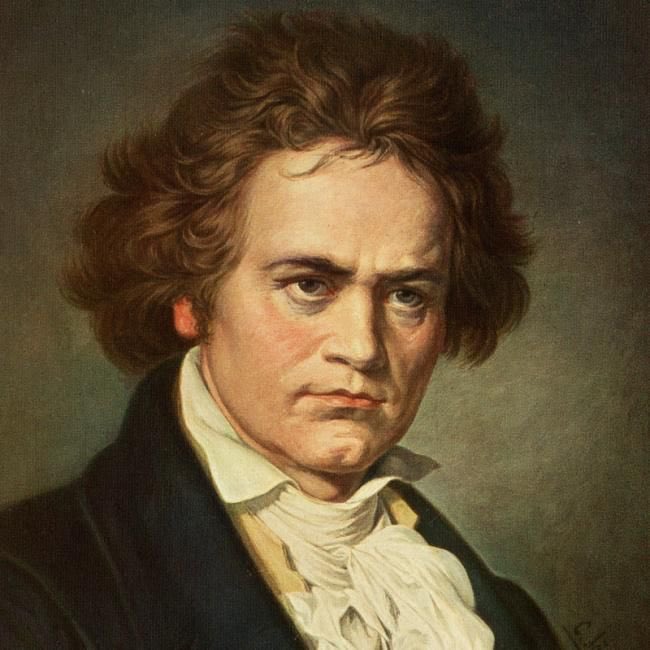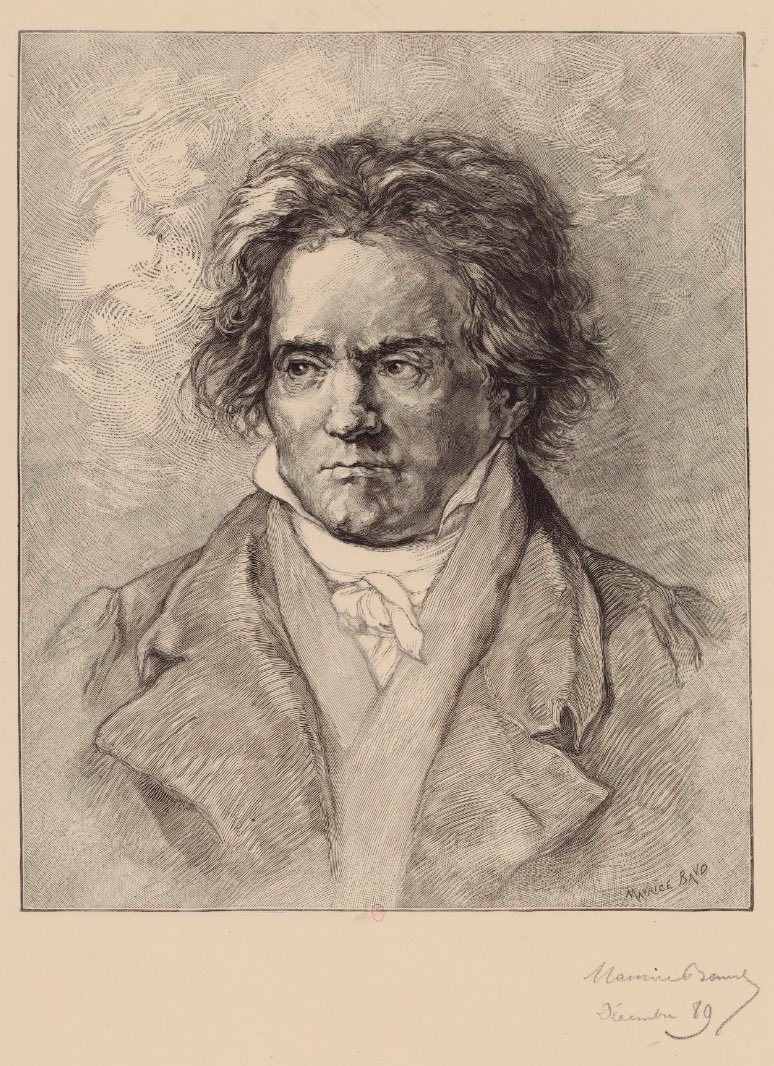On musical form; sixth instalment: Sonata Form
What is sonata form? For many people, the term sounds perhaps daunting, associated with the loftiest flights of imagination as it is, and with musical minds of the greatest renown, like Beethoven, Brahms, Haydn and Mozart.
1/30
What is sonata form? For many people, the term sounds perhaps daunting, associated with the loftiest flights of imagination as it is, and with musical minds of the greatest renown, like Beethoven, Brahms, Haydn and Mozart.
1/30
In a structural sense, however, sonata form is not too hard to explain—especially seeing that I have already spent so many words on other forms of a similar construction.
2/30
2/30
The sonata form is a ternary form. In essence, therefore, it differs not significantly from any other ternary form; not from the simple ternary form, not from the minuet or scherzo and neither from the rondo forms.
3/30
3/30
The larger a form becomes, however, the more urgently it is in need of a structurally unifying principle. In any of the rondo forms, for example, this is the “A“ section; the principal idea, which the music returns to again and again.
4/30
4/30
The sonata form can be distinguished from other forms by the key relationships between parts, often adhering more or less to a prescribed pattern, and—which is most important—the structure of the middle section.
5/30
5/30
In a minuet or scherzo, the middle section—the “trio”—is marked most clearly by a change in character, sometimes also in tempo; as in the scherzo from Mahler‘s First Symphony, where the trio almost seems a different piece altogether.
Trio: 4:01-7:17
6/30
Trio: 4:01-7:17
6/30
In the sonata form, the first section is essentially stable in terms of tonality.
In the middle section, the sense of key is unstable, and harmonically, it is essentially a continuous modulation.
7/30
In the middle section, the sense of key is unstable, and harmonically, it is essentially a continuous modulation.
7/30
This, then, is the nature of the contrast in a sonata form and often considered its most characteristic feature.
8/30
8/30
The structure of a sonata form can best be described as A-A-B-A. The first section, which is repeated, is called the “Exposition”, as it “exposes” the thematic material of the movement to the listener.
9/30
9/30
The exposition traditionally features two subjects*, each articulated in a different tonal region, the first in the tonic region of the work and the second in a closely related region, most often the dominant region.
*in Bruckner's symphonies, there are three subjects.
10/30
*in Bruckner's symphonies, there are three subjects.
10/30
In many cases, it contains a transition or transitional theme between the two subjects in order to bridge their different tonal regions more fluently.
Many expositions also contain a closing theme to round off the section.
11/30
Many expositions also contain a closing theme to round off the section.
11/30
The second section (the “B” section) is traditionally called the “Durchführung” or “Elaboration” and, as noted already, often viewed as its most characteristic feature.
12/30
12/30
This section often explores thematic material from the exposition; carrying the motivic material already presented through various regions and thereby providing the “unstable” contrast already mentioned.
13/30
13/30
The third section is designated by the term “Recapitulation” and repeats the themes from the exposition exactly. The second subject, however, is presented in the home key of the movement and the transition (if there is one) is altered to accommodate this change.
14/30
14/30
Now this is a concise summary of the trappings of sonata form; and like many of the explanations usually given about it, it makes the form seem like a complicated roadmap. Recall, however, that it is simply a large ternary form.
15/30
15/30
By viewing the sonata form in this manner, the overall scheme is not that difficult to grasp; after all, musical thoughts of equally lofty stature can be—and have been—presented in much simpler forms. A sophisticated form does not guarantee great music.
16/30
16/30
On to a few examples; with some explanation about what happens with the score included to illustrate the structural features in the movement.
17/30
17/30
First, a very tightly structured sonata form from Beethoven‘s Piano Sonata Op. 2/1. The exposition ends at the repeat mark on the second page; the first subject is marked in blue, the second in orange, the transition between them in lilac and the closing theme in yellow.
18/30

18/30


The elaboration repeats the figures of the first theme (blue), then of the second (red), which is repeated—transposed to accommodate the modulatory movement—transferred to the bass and finally broken up completely (purple) to prepare for the return of the principal theme.
19/30
19/30

Note that the last part of the elaboration already hints at the first subject from the exposition by virtue of the triplet figure (turquoise).
20/30
20/30

Then, the recapitulation at bar 101, which recapitulates the material according to the traditional model of sonata form. The second subject and closing theme both in f minor, a five-bar codetta is added to close the movement (green)
21/30
21/30

Recording:
Interestingly, Beethoven adds a second repeat mark at the end of the movement, asking performers to repeat not only the exposition but also the elaboration-recapitulation. This is not unique, although the form where this second repeat is not present is far more common.
22/30
22/30
This may be borrowed from the construction of the minuet/scherzo forms, if we recall their features: the first part is repeated and the second and third are repeated together; giving us a-a-ba-ba.
23/30
23/30
The Op. 10/1 sonata is equally clear-cut, though structurally a little more sophisticated, as the themes are more fluently integrated and more extended.
Again, first subject in blue, second in orange, the transition in lilac, the closing theme in yellow.
24/30

Again, first subject in blue, second in orange, the transition in lilac, the closing theme in yellow.
24/30


Note here that the second theme closes with a quotation of the first theme, and this is one of the features which binds the structure—the vast contrasts which are presented from the outset in this piece require such a strong unifying factor.
25/30
25/30
The elaboration section again starts with the first theme, before it presents a theme which has not yet been sounded, although it is related to earlier elements and possesses, in the accompaniment, figurations recalling the second subject.
26/30

26/30


The recapitulation follows as prescribed, with some minor variations, like leaving out bars 23-30 from the exposition to aid the change of key centre for the second subject.
27/30

27/30


Recording:
Finally, I would like to share a lecture from Leonard Bernstein on sonata form from 1964. This and other lectures by Mr Bernstein have proven an inspiration for me in learning about music and—more important still—sharing my enthusiasm.
28/30
28/30
Mr Bernstein‘s explanation is less technical, and therefore perhaps all the more accessible. I hope nevertheless that, through these threads, I have been able to shed some light—though in a somewhat rudimentary way—on the concept of musical form.
29/30
29/30
A few forms remain for me to discuss but for tonight I would like to bid everyone who has made it to this last part of this thread a good evening.
30/30
30/30
@threadreaderapp unroll
To all people who have read this Tweet, thank you! I had not expected such a great deal of attention for this thread. Are you curious as to the other building blocks of music? Feel free to peruse earlier #TheoryThursday threads below:
On phrase structures:
https://twitter.com/antonprince7/status/1291475204221304837?s=21
Simple ternary form:
https://twitter.com/antonprince7/status/1293783612173815808?s=21
The minuet and scherzo:
https://twitter.com/antonprince7/status/1296539204588048390?s=21
Preliminary thread to the discussion of rondo form:
https://twitter.com/antonprince7/status/1301604649091334149?s=21
The rondo forms:
https://twitter.com/antonprince7/status/1304176437520486403?s=21
• • •
Missing some Tweet in this thread? You can try to
force a refresh













